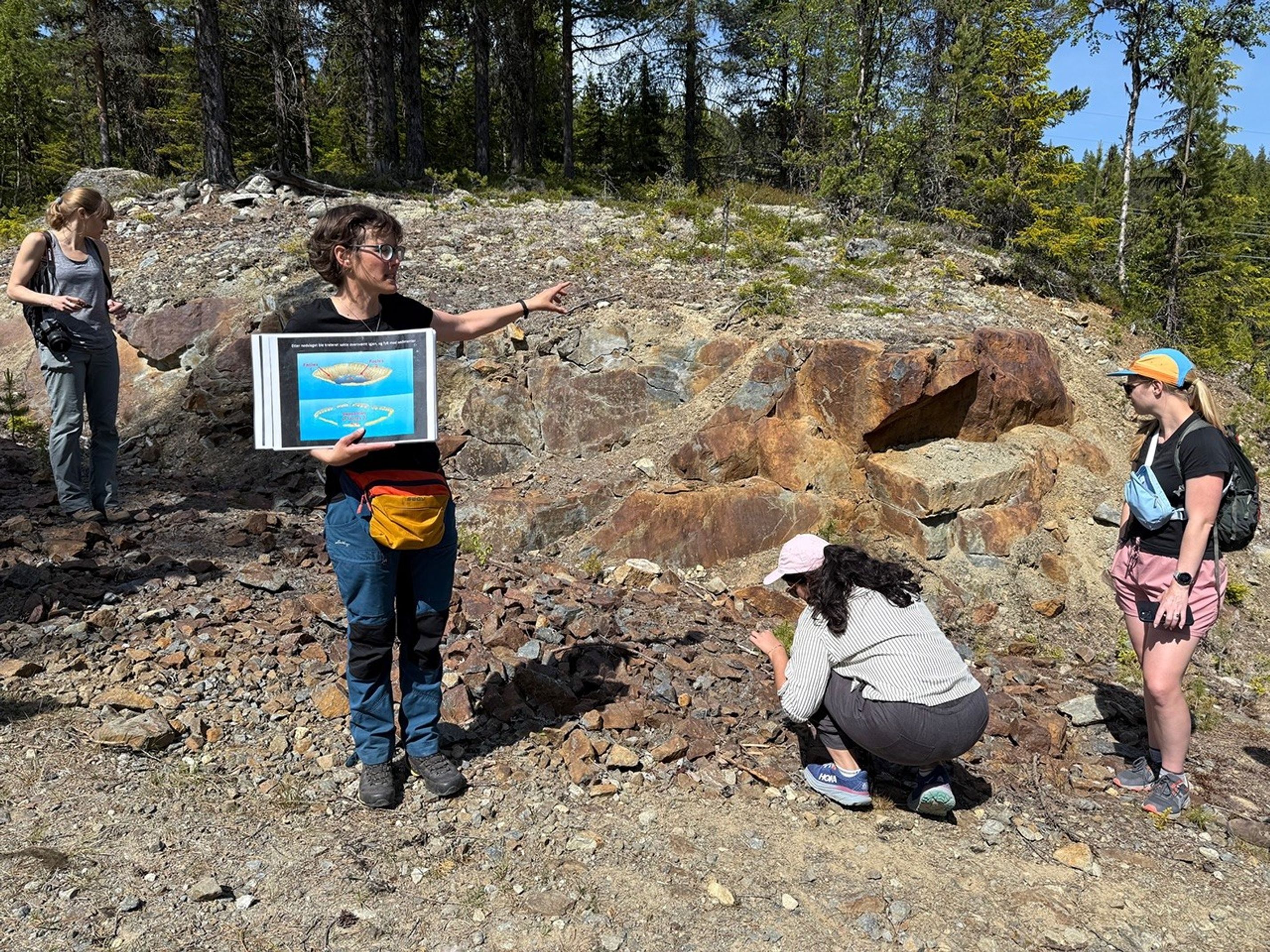Perhaps this long Labor Day weekend, you will find yourself on a hike that ends with a particularly steep stretch. On such a steep trail, you will simply want to concentrate on reaching the top of your destination and not be required to perform any other tasks.
Perhaps this long Labor Day weekend, you will find yourself on a hike that ends with a particularly steep stretch. On such a steep trail, you will simply want to concentrate on reaching the top of your destination and not be required to perform any other tasks. Imagine, instead, you were asked to dribble a soccer ball, juggle and sing a show tune while making your last push up the hill. Now you know how Curiosity feels this weekend! In addition to simply driving up the 20 degree slopes on the flank of Vera Rubin Ridge, Curiosity will acquire an amazing variety of science observations of the ridge rocks.
The long list of science tasks assigned to Curiosity is directly related to the long list of geologic features surrounding the rover on this part of the ridge. The rover is now parked on many of the bedding structures observed from farther down the ridge, and the science team selected several particularly nice examples - the targets "Jordans Delight," Mount Waldo," and "Three Bush Island" - for detailed Mastcam imaging. Other features of interest were the gray, rounded nodules observed all around the rover. ChemCam will shoot a collection of these nodules embedded in the bedrock at "Toothacher Island." MAHLI and APXS will acquire images and chemistry data from a collection of loose nodules at "Gunning Rocks," followed by a Mastcam multispectral observation of the target. Mastcam will also image "Cobscook Bay," another collection of loose nodules. ChemCam will gather data from an example of the long, straight, resistant veins apparent in the bedrock in front of the rover at "Narragaugus," and keep track of the bedrock chemistry at a small vertical exposure of bedrock, "Phoebe Ledge."
ChemCam, APXS and MAHLI will uniquely analyze another bedrock target, "Robinson Rock." Both before and after ChemCam shoots the target, MAHLI will acquire tightly spaced, overlapping images of the target which will be used to build a small-scale digital elevation model (DEM) of the surface. The goal is to be able to measure the ChemCam laser pits in the DEM. Of course, the ChemCam shots will also provide chemistry of Robinson Rock complementary to the APXS analysis of the target.
Both before and after a ~27 m drive that will place Curiosity right below the smooth bedrock cap on the lower part of the Vera Rubin Ridge, she will tear her eyes off the rocks and scan the skies above Gale. At both early morning and late afternoon times, Curiosity will assess the dust load in the atmosphere, and acquire images and movies seeking dust devils and clouds. REMS, RAD and passive DAN measurements will be acquired steadily throughout the plan, and DAN will actively sense the Vera Rubin Ridge subsurface after the drive.
Someone get that rover a water bottle and some trail mix!
Written by Michelle Minitti, Planetary Geologist at Framework






























